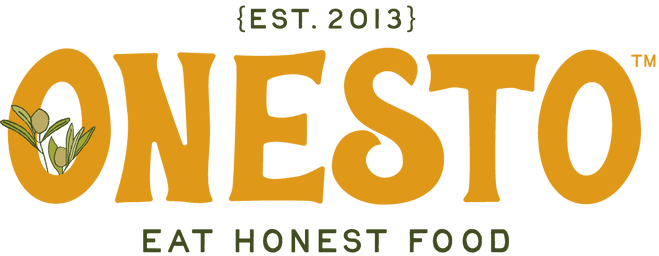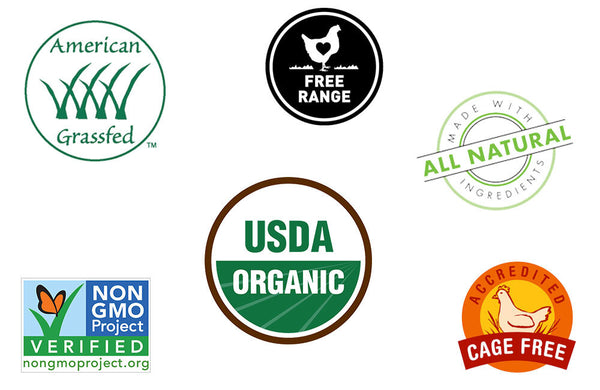Food Labels: What do they all mean?
Overwhelmed, anxious, confused and frustrated. It’s sounds as if I am describing my mood after watching an episode of Breaking Bad. But, this is actually how I feel at any given moment while I am in the supermarket. I should note that I am a vegan, but my family is not. So, when I make my grocery list, it does have animal-based products on it.
There are so many labels attached to food today, that it is nearly impossible (at least to me) to decipher their meanings. Cage-free, pasture-raised, free-range, farm-raised. Why do I feel like I need a PhD in Labels (not a real degree) just to know if the food I am buying is safe for my family?
I have been interested in healthy eating for as long as I have been an adult buying my own groceries. I know there is a clear cause and effect between what I eat and how I feel. However, choosing to be mindful of what I buy shouldn’t be this complicated, it shouldn’t be this confusing. Why do the labels all sound the same? Who gets to decide what labels are on the packages? What do they actually mean?
Over the past few years, I’ve been trying to get a better handle on what the labels mean and if any group or organization actually regulates them. Basically, I wanted to reduce my time in the supermarket from the length of a motion-picture movie to a weeknight sit-com. No one should be in the market reading labels for as long as I have been known to do. I wanted to cut through all the logos and jargon and just get to the facts. I know I shouldn’t use the same approach when buying ground hamburger as I use when buying a bottle of wine: choose the one with the prettiest label. Somehow that doesn’t seem responsible.
Here is what I’ve learned about the most common labels on packages today (and hopefully put into readable, understandable terms):
CAGE-FREE
-
regulated by the USDA and/or FDA
-
only means that that the hens are not confined to a cage
-
does not specify or indicate how much space they have, or whether the have ever been given access to the outdoors
-
their living conditions are often very cramped and covered in netting (to restrict flight) or enclosed in a fence to prevent wandering
-
in order to be cafe-free and certified humane by the HFAC, each hen must be given at least 1.5 square feet of space (about the size of a nightstand next to your bed)
FREE-RANGE
-
regulated by the USDA and/or FDA
-
animals are given access to the outdoors during the day, but just because the doors are open, this does not guarantee that the animal ever actually stepped foot outside
-
the open space might be covered in cement or only have a tiny amount of dirt or grass
-
in order to be free-range and certified humane, there must be a minimum of 2 square feet of outdoor space per animal (about the size of a small coffee table)
GRASS-FED
-
regulated by the USDA and/or FDA
-
animals eat nothing but their mother’s milk and grass from birth to harvest
-
grass may be fresh grass or grass-type hay that is scattered on the ground
-
can be kept inside for its entire life with no access to outside
PASTURE-RAISED
-
not regulated by the USDA and/or FDA
-
in order to be pasture-raised and certified humane there must be a minimum of 108-square-feet per animal (smaller than the average bedroom, for a cow…)
-
the animals must have access to the outdoors but also have access to a barn for cover
-
the animals must get a significant portion of their nutrition from a pasture, and generally, the pasture is not treated with synthetic fertilizers or pesticides
Best way to decipher between grass-fed and pasture-raised:
Grass-fed is what the animal eats, while pasture-raised is where the animal eats. Which is better? If you want to know that your beef or dairy source ate the food it evolved to eat, then grass-fed is for you, as grass-fed animals eat grass and little to no grain. If you want to know that your beef or dairy source roamed and grazed in its natural environment, choose pasture-raised.
NON-GMO
-
“A GMO, or genetically modified organism, is a plant, animal, or microorganism whose genetic makeup has been modified in a laboratory using genetic engineering or transgenic technology. This creates combinations of plant, animal, bacterial and virus genes that do not occur in nature or through traditional crossbreeding methods.” (1)
-
not regulated by the USDA
-
the use of GMOs is prohibited in organic grown and fed products
Did you know that Onesto cookies and crackers are certified non-GMO by the Non-GMO Project? Each and every one of our ingredients is tested, analyzed and verified (by a third party) that no GMOs are present in our products.
ORGANIC
-
regulated by the USDA and/or FDA
-
food is grown and processed “according to federal guidelines addressing, among many factors, soil quality, animal raising practices, pest and weed control, and use of additives.” (2)
-
produce can be called organic if it has been certified to have grown on or in soil that had no synthetic substances applied for three years prior to harvest
-
meat can be called organic as long as the animals are raised in living conditions that accommodate their natural behaviors (like the ability to graze on pastures), they are fed 100% organic feed and not administered antibiotics or hormones
HORMONE-FREE
-
regulated by the USDA and/or FDA
-
used to describe beef or milk that has been produced without the use of additional growth hormones
-
there are six steroid hormones used to increase muscle tissue in beef cattle (three are natural and three are synthetic)
-
“the synthetic hormones are administered to cattle either in their feed or through implants (pellets) that are inserted under the skin of the ear. The animal's ear is removed at the time of slaughter to prevent the pellet from entering the human food supply.” (3)
-
However, the hormones that the animal absorbed during its lifespan are present in their muscles, tissues, fat and organs.
-
-
ANTIBIOTIC-FREE
-
regulated by the USDA and/or FDA
-
about 80% of all antibiotics sold in the U.S. are given to animals (not people) in their feed or water to promote growth and/or prevent disease
-
this might be a major contributor to the public health threat of antibiotic resistance, which is when the bacteria that cause infections become resistant to the effects of the drugs designed to kill or treat them (4)
FAIR TRADE
-
the Fair Trade Certified™ seal, means the product was made according to rigorous social, environmental, and economic standards
-
the coalition works to ensure that the people making Fair Trade Certified goods work in safe conditions, are treated fairly and earn additional money to empower and uplift their communities
FARM-RAISED
(this terms applies to seafood)
-
regulated by the FDA (except for catfish, which is regulated by the USDA)
-
the fish are commercially brought up in tanks, netted pens and other enclosed areas
-
the fish are often fed corn meal, soy, genetically modified canola oil and even pellets of chicken feces in order to promote weight gain and a meatier flesh
-
farm-raised fish from other countries are often given very high doses of antibiotics, chemicals and added growth hormones as they are not held to the higher standards of the USA (5)
-
farm raised salmon are fed chemicals to provide a pinkish hue naturally found in wild salmon
Best way to know where your seafood is coming from:
Look at the Country of Origin Labeling (COOL), which is required on all seafood sold in the United States. Frozen seafood will have two labels: one to specify where the product was packaged and one that indicates where the seafood was caught or farmed. This can be confusing, as seafood can be packaged in the Unites States (so it appears to be a U.S. product), but is actually a product from a different country.
This was a lot of info! But, once you get a handle on what the most common labels actually mean, it does make food shopping a bit easier, I promise. I have this info stored on my phone and I refer to the document when I get confused (which is daily).
With love,
Jane

